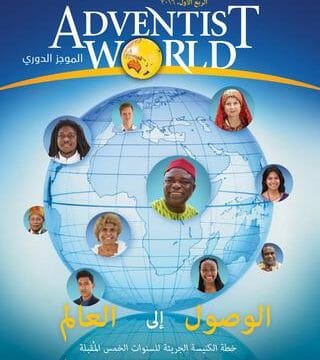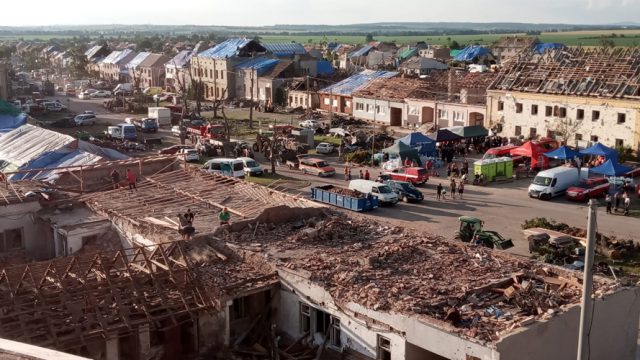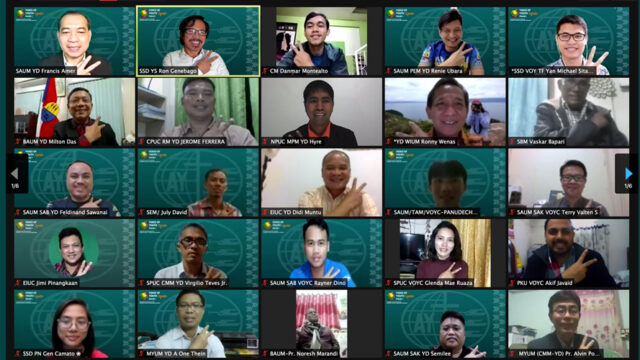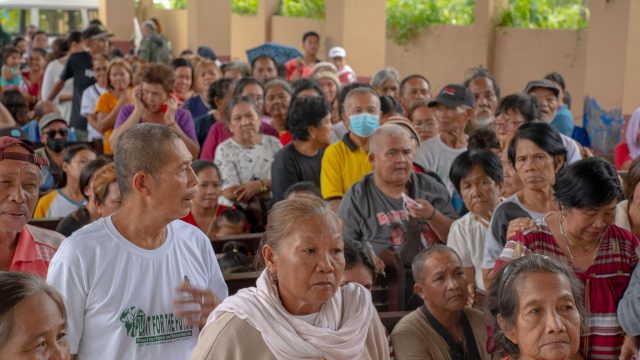Caring for God’s creation in Central America
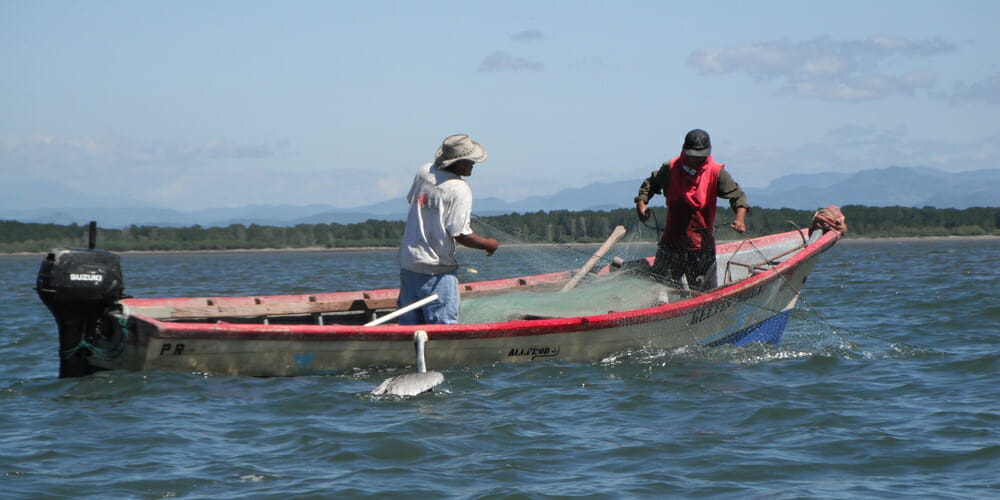
Someone said that environmentalism is a luxury for the rich, a strong statement that contains a certain amount of truth. Caring for the environment, worrying for endangered species, thinking globally about the planet and the wellness of future generations—all these things may come almost naturally for many today. For the millions of people who live in conditions of extreme poverty, however, they are not a priority.
If you struggle every day to provide enough food for your family; if your home lacks electricity and sanitation; if your job—if you have one—is unstable and poorly paid; if you do not have access to health care when your children are sick, then it is unlikely that you spend much time thinking about environmental issues. If, in addition, you live in an unsafe region where crime abounds and human life seems worthless, you will probably be much less concerned about the future of the planet than your own personal future.
Realities of Honduras
Sadly, this is everyday life for many in Central American countries. I witnessed it firsthand when doing research in rural southern Honduras. I am a marine biologist specializing in sea turtle conservation, and my doctoral research focused on the reproductive behavior of a population of olive ridley sea turtles that nest on the beach of Punta Ratón, a small fishing village located on the Pacific coast of Honduras.
Before my first research trip, my professor at Loma Linda University in California, United States, who had been working in Honduras for several years in charge of the environmental NGO (nongovernmental organization) ProTECTOR,1 warned me about the difficulty of persuading the local communities of the importance of sea turtle conservation. For centuries they’ve collected sea turtle eggs for consumption and commerce, and were quite unwilling to give up so valuable a resource.
I thought it was just a matter of finding better ways of communication: they should realize that the population of sea turtles was declining because they were removing all the eggs; and at current rates of overexploitation, the turtles would disappear in a few years, along with their precious eggs. It seemed crystal clear to me.
Then I arrived at my research site. I found about 200 one-room houses made of mud, sticks, and plastics inhabited by large families with children who looked much younger than their real ages because of malnourishment. In Punta Ratón the main source of income is fishing, but catches are often too low to cover even basic needs. Most families eat only once a day, beans and rice, adding some fish or chicken when they are lucky. No wonder they take anything edible from their environment: wild fruits, iguana-like lizards, buried mollusks, and sea turtle eggs.
A Change in Perspective
It took just a few weeks in Punta Ratón for me to realize that the hand-to-mouth existence of most people was not a sign of laziness or irresponsibility, but a survival strategy. Honduras is not only a poor country; it is a dangerous one. In 2010 it ranked highest worldwide in homicides.2 Drug trafficking and gangs are a serious issue in large cities, but they also affect rural communities in many regions.
I met several families in Punta Ratón that had lost a member because of street fights involving guns or knives. Death stories were way too common, some because of violence and others because of poor health care; but almost every family had been touched, some of them repeatedly. Babies or mothers lost because of childbirth complications, cancers in young people that remained undetected until it was too late, deadly infections, heart and respiratory conditions that could have been treated if they had just had cars and getting to the nearest hospital hadn’t required a one-hour drive on an inundated dirt road.
Then I understood. I understood why fishermen wanted to get paid daily for their job, and why after a good catch they spent all their profit that very evening. Life is so uncertain that they have become accustomed to not planning for tomorrow. Under these circumstances, how could I speak to them about environmental care? How could I convince them of the importance of refraining from removing the eggs from the beach so the baby turtles could hatch and grow, fulfill their pivotal ecological role in the marine ecosystem, and come back 15 to 20 years later to lay more eggs?
Many organizations that work on conservation worldwide deal with this same type of challenge. Developing countries face all sorts of environmental problems, but people have neither the environmental awareness nor the necessary resources to do anything about them.
One powerful reason for developing countries to get involved, however, is that given that environmental factors are tightly linked with human health,3 engaging in environmentally responsible behaviors not only would benefit the planet in the long run, but could also provide almost immediate improvements in the quality of life of the communities performing them.
The Environment and Human Health
Most of the 5 billion cases of diarrheal disease that happen in the world every year and cause more than 1.5 million deaths4 could be prevented if people had access to clean water and proper sanitation. Replacing wood and coal for cooking by greener methods would prevent many respiratory infections, and reforestation would create soils and reduce erosion, improving agricultural productivity and diminishing the effect of some natural catastrophes.
In the specific case of Punta Ratón, a study by Loma Linda doctoral student Carizma Chapman5 revealed that 52 percent of the families reported at least one sick member at the time of the study, being diarrhea, respiratory infections, anemia, malaria, and dengue, among the most prevalent diseases. Malaria and dengue are severe mosquito-borne infectious diseases. Because mosquitoes abound in Punta Ratón, the usual practice to keep them away is to burn plastic waste in houses and yards, creating toxic smoke that the people then breathe. These types of vicious cycles in which the measures to cope with one environmental problem are the direct cause of another environmental problem are common in poor local communities and extend to all aspects of life.
Fishermen in Punta Ratón suffer from lack of fish in their waters as a result of decades of overfishing. But because they depend on fishing to feed their families, their response to the scarcity of captures is to intensify the fishing efforts and to use more aggressive nets, which kill smaller fish and bycatch turtles and other nontarget animals, thus aggravating the problem.
Community-based Conservation
In recent decades, many voices have claimed that the only effective way to break the feedback loop between poverty and environmental exploitation is to create programs that address poverty and environmental issues together.6 Experts also affirm that a direct involvement of the local communities in the conservation projects is paramount for the projects to succeed in the long run. Community-based conservation7 is a modern approach to environmental issues that combines all the above: it seeks to achieve both nature conservation and human economic benefits, while considering the specific features of the local communities (needs, culture, traditional use of natural resources, opinions, and ideas) and encouraging local people to play an active role in the planning, development, and implementation of the projects.
Community-based conservation projects come in many styles. Some consist of the production and commercialization of local products obtained through sustainable practices, and others are based on ecotourism; but a key aspect for success is if the local community feels a sense of ownership of the project. Most conservation projects happen in collaboration with an NGO or a government agency, but they can be perceived as a collaboration or an external imposition. In this latter case the project is unlikely to work. Conversely, if the local people feel the need for a change and have a say in how that change should happen, if they have the opportunity to work themselves for that change, then the project will be much more prone to success.
In Central America some examples of successful sea turtle conservation projects follow the community-based conservation model. One of them has been in place since 1987 in the Ostional Wildlife Refuge in Costa Rica,8 a mass nesting beach for olive ridley sea turtles where tens to hundreds of thousands of female turtles aggregate to lay millions of eggs for several days in a row. Because most of the eggs laid first would be destroyed by the following nesters, the local community at Ostional decided to harvest only the eggs deposited at the beginning of each nesting event. They organize the harvesting and commercializing of these eggs, providing economic income for the community, but they also protect the turtles, clean and patrol the beach, and act as guides for the tourists.
To reproduce this exact model in sites such as Punta Ratón is not feasible because of the very low number of nesting turtles, but the underlying principle is still valid: local communities will get involved in conservation projects if (1) they can participate in the decision-making process and (2) they receive some economic benefits. Indeed, the study by Chapman revealed that the people at Punta Ratón are willing to work for turtle conservation through ecotourism initiatives (providing accommodation and meals for tourists, serving as guides for nesting beach tours, etc.), but they lack the infrastructure, logistics, and specific training to make it happen.
Loma Linda University and ProTECTOR have been providing help to Punta Ratón in a community-based-like fashion, focusing not only on nature conservation but also on human health and community development.
In recent years several crews of medical, nursing, and dentist students, with their professors, have periodically visited Punta Ratón to provide medical care, workshops on sea turtle conservation, and environmental education, as well as training for women on healthful cooking, accounting, and operating a small business. Although many challenges still exist, such as getting the community to take actual responsibility for the projects and obtaining support and participation of the local government, significant advances have been achieved. The local community is now more open to allowing scientific research onsite, the environmental awareness has grown, and people are showing interest in participating in conservation projects, especially in ecotourism.
A Wholistic Approach
When I arrived in Punta Ratón for the first time, I thought I had to convince people of the importance of environmental care. After six years working there, my perspective has changed. I still believe that a respectful and sustainable way of living is good both for the planet and for the people who practice it, but I came to realize that I should not impose that view on others, especially on those who are suffering.
As I found out in many other areas in my life, the best approach is to follow Jesus’ example. He fed and healed people first, then He addressed other issues. We have the God-given duty of being stewards of creation (Gen. 1:28; 2:15), but we have as well been commanded to take care of those in need (Deut. 15:11; Isa. 58:10; Matt. 25:34-40; James 1:27; 1 John 3:17). A wholistic approach aiming both for poverty alleviation and nature conservation seems not only the most effective way to fulfill environmental goals in Central America, but the most Christian way as well.
1 Protective Turtle Ecology Center for Training, Outreach, and Research (ProTECTOR, Inc.), www.turtleprotector.org.
2 United States Embassy, Tegucigalpa, Honduras (2012), Temporary Duty Personnel Security Brief Honduras 2012. Retrieved from http://hortcrsp.ucdavis.edu/2014/tdy_security_briefing.pdf.
3 Hiremagalur N. B. Gopalan, “Environmental Health in Developing Countries: An Overview of the Problems and Capacities,” Environmental Health Perspectives 111 no. 9 (2003): A446.
4 Peter Furu et al., “Poverty, Health, and Environment: Placing Environmental Health on Countries’ Development Agendas” (2008).
5 Carizma Amila Chapman, “Communities in Action: Participatory Assessments as an Initial Stage in Critical Consciousness Raising and Community Capacity Building” (2015).
6 William M. Adams et al., “Biodiversity Conservation and the Eradication of Poverty,” Science 306, no. 5699 (2004): 1146-1149; Dilys Roe et al., eds., Biodiversity Conservation and Poverty Alleviation: Exploring the Evidence for a Link (Hoboken, N.J.: John Wiley & Sons, 2012).
7 For more information on community-based conservation, see Noemi Durán, “Can Conservation Projects Be Economically Viable?” in S. Dunbar, L. J. Gibson, and H. M. Rasi, eds., Entrusted: Christians and Environmental Care (Montemorelos, Mexico: Adventus, 2013).
8 Lisa M. Campbell, “Use Them or Lose Them? Conservation and the Consumptive Use of Marine Turtle Eggs at Ostional, Costa Rica,” Environmental Conservation 25, no. 4 (1998): 305-319; Lisa M. Campbell, Bethany J. Haalboom, and Jennie Trow, “Sustainability of Community-based Conservation: Sea Turtle Egg Harvesting in Ostional (Costa Rica) Ten Years Later,” Environmental Conservation 34, no. 2 (2007): 122-131.
Noemí Durán, Ph.D., is director of the Inter-European Division branch office of the Geoscience Research Institute and lives in Valencia, Spain.



